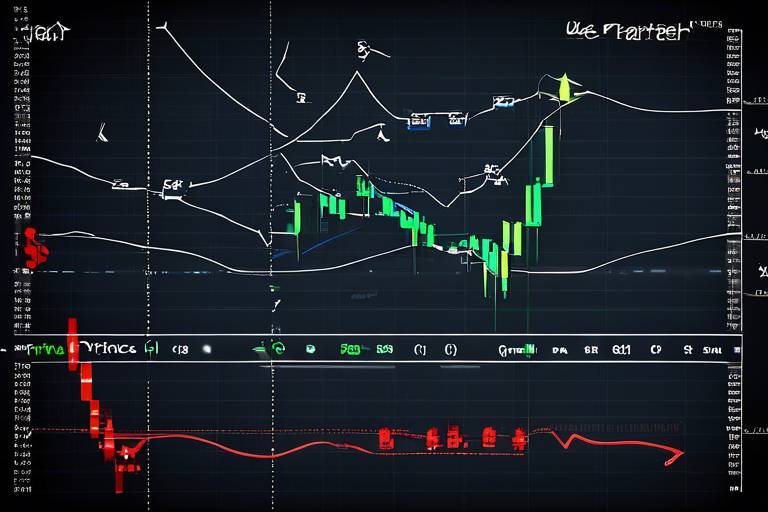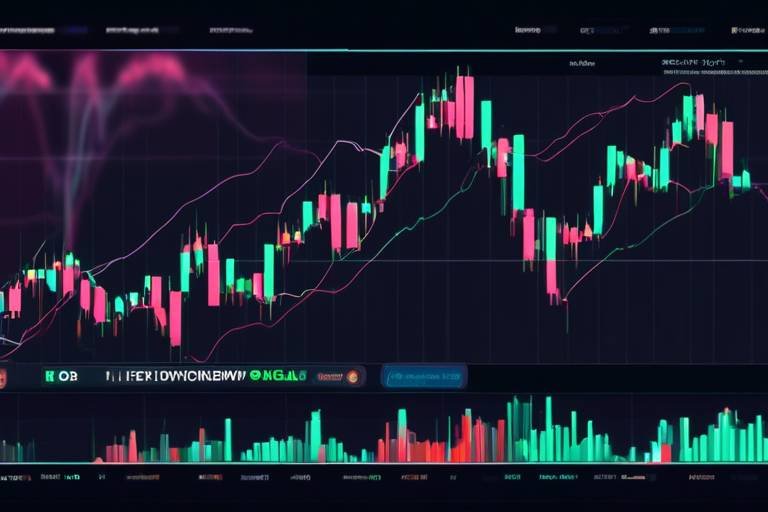The Role of Sentiment Analysis in Technical Trading
In the ever-evolving world of finance, traders are constantly seeking an edge to enhance their strategies and improve their decision-making processes. One of the most powerful tools in this quest is sentiment analysis. But what exactly is sentiment analysis, and how does it fit into the realm of technical trading? In simple terms, sentiment analysis refers to the process of interpreting emotions and opinions expressed in textual data, such as news articles, social media posts, and financial reports. By gauging the overall sentiment surrounding a particular asset or market, traders can gain valuable insights that go beyond traditional technical indicators.
Imagine walking into a crowded room filled with people discussing a hot topic. Some are excited, while others are skeptical. If you could somehow measure the overall mood of the room, wouldn’t that give you a better understanding of the conversation at hand? That’s precisely what sentiment analysis does for traders. It enables them to tap into the collective emotions of investors and market participants, providing a clearer picture of market dynamics.
As we delve deeper into the role of sentiment analysis in technical trading, we’ll explore its significance in finance, the key techniques that drive it, and the impact it has on market predictions. By the end of this article, you’ll see how sentiment analysis can be a game-changer for traders looking to refine their strategies and make more informed decisions.
Sentiment analysis is not just a buzzword; it's a vital component that aids traders in understanding market sentiment. In the financial world, where emotions can often drive market movements, being able to interpret the underlying sentiments can be the difference between a profitable trade and a costly mistake. By analyzing the tone of news articles, social media chatter, and analyst reports, traders can gauge whether the sentiment is leaning towards optimism or pessimism.
For instance, if a company releases a quarterly earnings report that exceeds expectations, the sentiment in the media is likely to be overwhelmingly positive. Conversely, if a significant scandal breaks involving the same company, the sentiment may shift drastically to negative. This shift can lead to immediate price reactions in the stock market, highlighting the importance of sentiment analysis in predicting market movements.
To effectively perform sentiment analysis, traders rely on various techniques, primarily Natural Language Processing (NLP) and Machine Learning. These methodologies allow traders to sift through vast amounts of unstructured data and extract meaningful insights that can inform their trading strategies.
NLP is a fascinating field that bridges the gap between human language and computer understanding. It enables computers to analyze, interpret, and generate human language in a way that is both valuable and actionable. In the context of sentiment analysis, NLP is crucial for parsing through enormous datasets, such as social media posts or news articles, to identify sentiments expressed within. For traders, this means transforming raw data into insights that can drive trading decisions.
Text mining is a subset of NLP that focuses on extracting useful information from unstructured text. By employing text mining techniques, traders can identify trends, patterns, and sentiments that may not be immediately obvious. For example, a trader might use text mining to analyze thousands of tweets about a particular stock and determine whether the overall sentiment is positive or negative, thereby informing their trading strategy.
Machine learning algorithms play a pivotal role in enhancing the accuracy of sentiment analysis. These algorithms can learn from historical data and improve their predictions over time. Some popular algorithms used in trading include:
- Support Vector Machines (SVM): Effective for classification tasks, distinguishing between positive and negative sentiments.
- Naive Bayes: A probabilistic model that is particularly useful for text classification.
- Deep Learning: Leveraging neural networks to analyze complex patterns in data, providing more nuanced sentiment interpretations.
By employing these algorithms, traders can enhance their ability to predict market movements based on sentiment, leading to more informed trading decisions.
Identifying reliable data sources is vital for effective sentiment analysis. Traders can utilize various platforms to gather sentiment data, including:
- Social Media Platforms: Twitter, Facebook, and Reddit are gold mines for real-time sentiment data.
- Financial News Websites: Sources like Bloomberg, CNBC, and Reuters provide timely news that can influence market sentiment.
- Analyst Reports: Insights from financial analysts can provide context to market movements and sentiments.
By leveraging these data sources, traders can build a comprehensive view of market sentiment, allowing them to make more strategic decisions.
Sentiment plays a crucial role in shaping market trends. When the collective sentiment is positive, it often leads to bullish markets, while negative sentiment can result in bearish trends. Understanding this dynamic is essential for traders who wish to navigate the complexities of financial markets effectively.
Investor behavior is heavily influenced by market sentiment. When sentiment is positive, investors are more likely to buy, believing that prices will continue to rise. Conversely, negative sentiment can trigger panic selling, leading to sharp declines in asset prices. By understanding this relationship, traders can better predict market movements and adjust their strategies accordingly.
Real-world examples illustrate the practical applications of sentiment analysis. For instance, during the COVID-19 pandemic, traders who monitored social media sentiment about vaccine developments were able to anticipate market reactions and position themselves advantageously. Similarly, traders who analyzed sentiment around major tech companies during earnings seasons often found correlations between sentiment shifts and stock price movements.
1. What is sentiment analysis?
Sentiment analysis is the process of interpreting emotions and opinions expressed in text data to gauge the overall sentiment surrounding an asset or market.
2. How does sentiment analysis enhance trading strategies?
By understanding market sentiment, traders can make more informed decisions, anticipate market movements, and refine their trading strategies.
3. What techniques are used in sentiment analysis?
Key techniques include Natural Language Processing (NLP), text mining, and machine learning algorithms.
4. Where can traders find data for sentiment analysis?
Traders can gather sentiment data from social media platforms, financial news websites, and analyst reports.
5. Why is understanding investor behavior important?
Understanding investor behavior helps traders predict market trends and adjust their strategies based on prevailing sentiments.

Understanding Sentiment Analysis
Sentiment analysis is a fascinating field that revolves around the interpretation of emotions and opinions expressed in textual data. In the realm of finance, it plays a pivotal role in understanding market sentiment, which can significantly influence trading decisions. Imagine trying to predict the weather without knowing if it's sunny or stormy outside; that’s akin to trading without grasping the underlying sentiment of the market. By analyzing the sentiment, traders can gauge the overall mood of the market—from overly optimistic to deeply pessimistic—and make informed decisions accordingly.
The significance of sentiment analysis in finance cannot be overstated. It acts as a lens through which traders can view the market's emotional landscape. When traders are aware of the prevailing sentiment, they can better anticipate potential price movements and adjust their strategies. For instance, a surge in positive sentiment surrounding a particular stock may indicate a potential rise in its price, while negative sentiment may signal a downturn. This emotional barometer can be the difference between a profitable trade and a significant loss.
To effectively harness sentiment analysis, traders often rely on various data sources, including social media, news articles, and financial reports. Each of these sources provides a unique perspective on market sentiment. For example, social media platforms like Twitter and Reddit can reveal real-time reactions to market events, while financial news articles can provide more in-depth analysis. By combining insights from multiple sources, traders can create a more comprehensive view of market sentiment.
In essence, sentiment analysis is not just about crunching numbers; it's about interpreting human emotions and behaviors. Traders who understand this can leverage sentiment to enhance their technical trading strategies. They can identify trends, spot potential reversals, and make decisions that align with the mood of the market. It's like having a sixth sense in trading—an intuitive understanding of what others are feeling and how that might affect their actions.
As we delve deeper into the world of sentiment analysis, we will explore key techniques and methodologies that drive this powerful tool. By understanding the mechanics behind sentiment analysis, traders can unlock new levels of insight and enhance their decision-making processes. So, buckle up, because the journey into the emotional intricacies of the market is just beginning!

Key Techniques in Sentiment Analysis
When it comes to sentiment analysis, several key techniques stand out, each playing a vital role in transforming raw data into meaningful insights. At the heart of this process are two primary methodologies: Natural Language Processing (NLP) and Machine Learning (ML). Both serve as the backbone of sentiment analysis, enabling traders to decode the emotions embedded in textual data and make informed decisions based on market sentiment.
Natural Language Processing is a field that focuses on the interaction between computers and humans through natural language. It allows traders to analyze vast amounts of unstructured text data, such as news articles, social media posts, and financial reports. By utilizing NLP, traders can extract sentiment indicators that reveal the general mood of the market. Imagine sifting through a mountain of text to find hidden gems of information; NLP acts like a powerful metal detector, helping traders pinpoint valuable insights that can influence their trading strategies.
One of the most effective applications of NLP in sentiment analysis is text mining. This process involves extracting and transforming unstructured text into a structured format, making it easier to analyze. Through text mining, traders can identify trends, keywords, and sentiments that are prevalent in the market. For instance, if a particular stock is frequently mentioned alongside positive adjectives, it may indicate a bullish sentiment that traders can capitalize on. Conversely, negative language surrounding a stock could signal a potential downturn.
On the other hand, Machine Learning algorithms significantly enhance the accuracy and efficiency of sentiment analysis. By training on historical data, these algorithms can learn patterns and improve their predictive capabilities over time. Some popular machine learning algorithms used in sentiment analysis include:
| Algorithm | Description |
|---|---|
| Naive Bayes | A probabilistic classifier that applies Bayes' theorem, ideal for text classification. |
| Support Vector Machines (SVM) | A supervised learning model that analyzes data for classification and regression analysis. |
| Recurrent Neural Networks (RNN) | Particularly effective for sequential data, making them suitable for analyzing time-series data in trading. |
These algorithms work by processing large datasets and identifying patterns that may not be immediately evident to human analysts. For example, a trader might use an SVM to classify the sentiment of tweets about a particular stock, allowing them to gauge public sentiment and adjust their trading strategy accordingly. The combination of NLP and machine learning not only streamlines the sentiment analysis process but also provides traders with a competitive edge in the fast-paced financial markets.
In conclusion, the key techniques in sentiment analysis—NLP and machine learning—are indispensable tools for traders. They allow for the extraction of valuable insights from vast amounts of data, helping to inform trading strategies and improve decision-making processes. As technology continues to evolve, the integration of these techniques will only become more sophisticated, paving the way for even more effective trading strategies.
- What is sentiment analysis? Sentiment analysis is the process of interpreting emotions and opinions expressed in textual data to gauge market sentiment.
- How does NLP contribute to sentiment analysis? NLP helps analyze large volumes of text data, extracting meaningful insights that inform trading decisions.
- What role do machine learning algorithms play in sentiment analysis? Machine learning algorithms enhance the accuracy of sentiment analysis by identifying patterns and trends in data.
- Can sentiment analysis predict market movements? While sentiment analysis can provide insights into market trends, it is not foolproof and should be used in conjunction with other trading strategies.

Natural Language Processing (NLP)
is a fascinating field that bridges the gap between human language and computer understanding. In the context of trading, NLP plays a pivotal role in analyzing vast amounts of textual data, such as news articles, social media posts, and financial reports. By leveraging NLP techniques, traders can extract valuable insights from unstructured text, allowing them to gauge market sentiment and make informed decisions.
Imagine trying to sift through thousands of tweets or articles to determine how investors feel about a particular stock. It’s like searching for a needle in a haystack! This is where NLP comes in handy. It employs various techniques to process and analyze language, enabling traders to identify trends in sentiment. For instance, NLP can categorize text as positive, negative, or neutral, providing a clear picture of market emotions.
One of the key applications of NLP in trading is sentiment extraction. By utilizing algorithms that can recognize keywords and phrases, traders can quickly assess the general mood surrounding a stock or the market as a whole. This process can be broken down into several steps:
- Tokenization: Breaking down text into individual words or phrases.
- Sentiment Scoring: Assigning a score based on the sentiment expressed in the text.
- Contextual Analysis: Understanding the context in which words are used to improve accuracy.
The ability to analyze sentiment in real-time can be a game changer for traders. For example, if a major news outlet publishes a positive article about a tech company, an NLP tool can quickly assess the sentiment and alert traders to potential buying opportunities. Conversely, if negative sentiment is detected, traders might decide to sell or short the stock before the market reacts.
Furthermore, NLP is not just limited to analyzing textual data; it's also instrumental in creating predictive models. By feeding historical sentiment data into machine learning algorithms, traders can develop models that forecast future price movements based on current sentiment trends. This fusion of NLP and machine learning enhances the overall accuracy of trading strategies, making them more robust and reliable.
In summary, NLP is an essential tool for traders looking to harness the power of sentiment analysis. It transforms raw textual data into actionable insights, enabling traders to stay ahead of market trends. As technology continues to evolve, the integration of NLP in trading strategies will likely become even more sophisticated, providing traders with a competitive edge in the fast-paced financial markets.

Text Mining
Text mining is a powerful tool that allows traders to sift through vast amounts of unstructured text data to extract meaningful insights that can significantly influence trading decisions. Imagine trying to find a needle in a haystack; this is what traders face when they attempt to analyze raw data from news articles, social media posts, and financial reports. Text mining acts as a magnet, pulling out relevant information that can indicate market sentiment and trends.
At its core, text mining involves several key processes, including information retrieval, data mining, and natural language processing (NLP). By utilizing these techniques, traders can transform mountains of text into actionable intelligence. For instance, consider how a trader might analyze tweets about a particular stock. By applying text mining, they can quickly gauge whether the sentiment surrounding that stock is predominantly positive or negative, thus guiding their investment decisions.
One of the most significant benefits of text mining in trading is its ability to uncover hidden patterns that may not be immediately obvious. For example, a trader might discover a correlation between the frequency of specific keywords in news articles and subsequent price movements of a stock. This kind of insight can be invaluable, helping traders to anticipate market shifts before they occur. Below is a simple illustration of how different types of text data can be mined for sentiment analysis:
| Data Source | Type of Text | Potential Insights |
|---|---|---|
| Social Media | Tweets, Posts | Real-time sentiment trends |
| News Articles | Headlines, Articles | Market sentiment shifts |
| Financial Reports | Quarterly Earnings | Investor confidence indicators |
Moreover, the effectiveness of text mining is amplified by the advancements in machine learning algorithms, which can learn from historical data to improve accuracy over time. This synergy between text mining and machine learning creates a robust framework for traders, allowing them to make more informed decisions based on sentiment analysis. As the financial markets continue to evolve, the integration of text mining into trading strategies will likely become increasingly essential. By staying ahead of the curve and embracing these technologies, traders can enhance their chances of success in an unpredictable market landscape.

Machine Learning Algorithms
In the realm of sentiment analysis, serve as the backbone for extracting meaningful insights from vast amounts of data. These algorithms are designed to learn from historical data, identify patterns, and make predictions about future market movements based on sentiment. With the explosion of information available on social media, financial news, and various online platforms, traditional analytical methods often fall short. Here, machine learning shines by processing this data efficiently and accurately.
Several popular machine learning algorithms are frequently employed in sentiment analysis for trading. Among these, Support Vector Machines (SVM), Naive Bayes, and Deep Learning techniques such as Recurrent Neural Networks (RNN) and Convolutional Neural Networks (CNN) have gained significant traction. Each of these algorithms has its unique strengths:
| Algorithm | Description | Strengths |
|---|---|---|
| Support Vector Machines (SVM) | A supervised learning model that analyzes data for classification and regression analysis. | Effective in high-dimensional spaces and robust against overfitting. |
| Naive Bayes | A probabilistic classifier based on applying Bayes' theorem with strong independence assumptions. | Fast and efficient for large datasets, particularly useful for text classification. |
| Deep Learning (RNN/CNN) | Advanced neural networks designed to recognize patterns in sequences or spatial data. | Highly effective in capturing complex relationships in data, especially in unstructured textual data. |
By leveraging these algorithms, traders can convert raw sentiment data into actionable insights. For instance, an RNN can analyze the sequence of tweets about a particular stock, allowing it to gauge the overall sentiment trend over time. This can be crucial in predicting whether a stock's price is likely to rise or fall based on the prevailing public sentiment.
Moreover, the integration of machine learning with natural language processing (NLP) techniques enhances the capability of sentiment analysis. NLP helps in understanding the context and nuances of language, which is vital when interpreting sentiments from text. Together, these technologies create a powerful toolkit for traders, enabling them to make informed decisions based on the latest market sentiment.
In summary, machine learning algorithms are not just a passing trend; they are essential tools in the toolkit of modern traders. As the financial landscape continues to evolve, those who harness the power of machine learning in sentiment analysis will likely gain a competitive edge, making it a fascinating area to watch in the future of trading.
- What is sentiment analysis?
Sentiment analysis is the process of interpreting emotions and opinions expressed in text data, often used to gauge market sentiment in finance.
- How does machine learning improve sentiment analysis?
Machine learning algorithms can analyze large datasets, identify patterns, and make predictions, enhancing the accuracy of sentiment analysis.
- What are some common machine learning algorithms used in trading?
Common algorithms include Support Vector Machines (SVM), Naive Bayes, and Deep Learning techniques like RNN and CNN.

Data Sources for Sentiment Analysis
When it comes to sentiment analysis, the quality and reliability of your data sources can make or break your trading strategy. Think of sentiment analysis as a treasure hunt; the more reliable your map (data sources), the more valuable the treasure (insights) you can uncover. So, what are the best sources to tap into for sentiment analysis? Let’s explore some of the most valuable resources that traders can utilize to gather sentiment data.
One of the primary sources of sentiment data is social media platforms. Sites like Twitter, Facebook, and Reddit are bustling with real-time discussions about stocks, cryptocurrencies, and market trends. Traders can analyze posts, comments, and shares to gauge public sentiment. For instance, a sudden spike in positive tweets about a particular stock could indicate bullish sentiment, prompting traders to consider buying positions. However, it’s essential to filter out noise and focus on credible influencers and trending topics to ensure accuracy.
Another significant source is financial news websites. News articles, press releases, and expert opinions can provide insights into market sentiment. Traders often utilize sentiment analysis tools to scan headlines and articles for positive or negative language. For example, if a major financial news outlet publishes an article with a negative outlook on a company, this can influence investor sentiment and lead to a decrease in stock prices. Thus, keeping an eye on financial news is crucial for informed decision-making.
Moreover, forums and online communities dedicated to trading and investing can serve as rich sentiment sources. Websites like StockTwits and specialized subreddits on Reddit allow traders to engage in discussions and share opinions. Analyzing conversations in these forums can reveal the collective sentiment of retail investors, which often diverges from institutional sentiment. This divergence can present unique trading opportunities.
Lastly, market data providers offer structured sentiment data derived from various sources. These providers often use advanced algorithms to compile sentiment scores based on a range of inputs, including social media, news articles, and economic indicators. Utilizing these data services can save traders time and effort while providing a comprehensive view of market sentiment.
In summary, the sources of sentiment data are as diverse as the market itself. By leveraging social media, financial news, online forums, and specialized market data providers, traders can gain a nuanced understanding of market sentiment. This understanding is invaluable in making informed trading decisions and can significantly enhance the effectiveness of technical trading strategies.

Impact of Sentiment on Market Trends
The influence of sentiment on market trends is profound and multifaceted. In the world of trading, investor sentiment can act like a compass, guiding traders through the often turbulent waters of financial markets. When market sentiment is positive, it can lead to a surge in buying activity, pushing prices upward. Conversely, negative sentiment can trigger a wave of selling, resulting in price declines. This dynamic interplay between sentiment and market movements is crucial for anyone looking to make informed trading decisions.
To illustrate this, consider how news events can shift market sentiment almost overnight. For instance, a positive earnings report from a major corporation can ignite enthusiasm among investors, leading to increased buying pressure. On the flip side, a geopolitical crisis or unexpected economic downturn can create fear, prompting a sell-off. These reactions are not just knee-jerk; they reflect a collective emotional response that can significantly shape market trends.
Moreover, sentiment isn't just about immediate reactions to news; it also encompasses broader trends in investor psychology. Market sentiment can be categorized into bullish (optimistic) and bearish (pessimistic) phases, each with its own characteristics. Understanding these phases can help traders anticipate potential market movements. For example:
- Bullish Sentiment: Characterized by rising prices, increased trading volume, and a general sense of optimism among investors.
- Bearish Sentiment: Marked by falling prices, reduced trading activity, and a prevailing sense of pessimism.
Traders who can gauge market sentiment effectively can position themselves advantageously. For instance, during periods of bullish sentiment, a trader might choose to hold onto positions longer, expecting further gains. In contrast, during bearish phases, they may opt to sell or hedge their positions to mitigate potential losses.
Furthermore, sentiment analysis tools can provide insights into market psychology by analyzing social media, news articles, and other textual data. This analysis can reveal underlying trends that might not be immediately visible through traditional technical indicators. For example, a sudden spike in negative sentiment on social media about a particular stock could signal a potential downturn, even if the technical indicators appear stable.
In summary, the impact of sentiment on market trends cannot be overstated. By understanding how sentiment influences investor behavior and market movements, traders can make more informed decisions. As markets continue to evolve, staying attuned to the emotional pulse of the market will be essential for successful trading strategies.
Q1: How does sentiment analysis improve trading strategies?
A1: Sentiment analysis enhances trading strategies by providing insights into market psychology, helping traders anticipate price movements based on collective emotions.
Q2: What are the main sources of sentiment data?
A2: Key sources include social media platforms, financial news articles, and market reports, which can all be analyzed for sentiment trends.
Q3: Can sentiment analysis predict market crashes?
A3: While it can't predict crashes with certainty, significant shifts in sentiment often precede market downturns, making it a valuable tool for risk management.

Investor Behavior and Market Sentiment
Understanding investor behavior is crucial for predicting market trends, and this is where sentiment analysis shines. Have you ever wondered why stocks rise or fall seemingly without reason? Often, it boils down to the collective emotions of investors. When traders feel optimistic, they tend to buy more, pushing prices upward. Conversely, fear can lead to selling, causing prices to plummet. This emotional rollercoaster is what sentiment analysis seeks to decode, providing traders with a clearer view of market dynamics.
At its core, sentiment analysis helps traders gauge the mood of the market. By analyzing news articles, social media posts, and even earnings calls, traders can get a sense of whether the overall sentiment is bullish or bears. For instance, if a major tech company releases a new product and the sentiment around it is overwhelmingly positive, investors are likely to jump in, expecting the stock price to rise. On the flip side, negative sentiment—like poor quarterly earnings—can lead to a rush for the exits, as traders seek to minimize losses.
One fascinating aspect of investor behavior is the herd mentality. This phenomenon occurs when individuals follow the crowd, often leading to irrational market movements. Imagine a stampede; if one investor starts selling off shares, others may panic and do the same, regardless of the underlying fundamentals. This is where sentiment analysis becomes a powerful tool. By identifying trends in sentiment, traders can anticipate these herd behaviors and position themselves accordingly. They can either ride the wave of positive sentiment or hedge against the fear-driven sell-offs.
Additionally, sentiment analysis can reveal discrepancies between market sentiment and actual market performance. For example, a stock may be trading at a high price due to positive sentiment, even if the company's fundamentals are weak. By leveraging sentiment analysis, savvy traders can spot these misalignments and take advantage of potential corrections. In this way, sentiment analysis not only enhances trading strategies but also fosters a deeper understanding of the market's emotional landscape.
To illustrate the impact of sentiment on investor behavior, consider the following table that summarizes key investor reactions to different sentiment indicators:
| Sentiment Indicator | Investor Reaction | Market Impact |
|---|---|---|
| Positive News (e.g., product launch) | Increased buying activity | Price surge |
| Negative News (e.g., earnings miss) | Increased selling activity | Price decline |
| Social Media Buzz (e.g., trending stock) | Mixed reactions | Volatility |
In conclusion, the interplay between investor behavior and market sentiment is a fascinating aspect of trading. By utilizing sentiment analysis, traders can better understand the emotional drivers behind market movements and make more informed decisions. Whether it's capitalizing on positive sentiment or avoiding the pitfalls of negative trends, sentiment analysis offers invaluable insights into the complex world of trading.
- What is sentiment analysis? Sentiment analysis is the process of interpreting emotions and opinions expressed in text data, helping traders gauge market mood.
- How does sentiment analysis impact trading? It enhances trading strategies by providing insights into investor behavior and predicting market trends based on emotional responses.
- Can sentiment analysis predict stock prices? While it can indicate potential price movements, it should be used in conjunction with other analysis techniques for better accuracy.
- What data sources are best for sentiment analysis? Social media, financial news, and earnings reports are among the most valuable sources for gathering sentiment data.

Case Studies of Sentiment Analysis in Trading
To truly grasp the power of sentiment analysis in trading, it’s essential to look at real-world applications. Numerous traders and institutions have successfully integrated sentiment analysis into their strategies, leading to impressive results. One notable case is that of a hedge fund that utilized sentiment analysis to predict stock movements in the tech sector. By analyzing social media platforms, news articles, and financial reports, they developed a model that could gauge public sentiment towards specific companies. This model allowed them to make informed decisions that significantly outperformed the market.
Another compelling example comes from a retail trader who focused on cryptocurrency. By leveraging sentiment analysis tools, this trader monitored Twitter feeds and Reddit discussions surrounding major cryptocurrencies like Bitcoin and Ethereum. They discovered that spikes in positive sentiment often preceded significant price increases. By acting on these insights, the trader was able to capitalize on market movements that many others missed, showcasing how sentiment can be a leading indicator in the fast-paced world of crypto trading.
Moreover, a research team at a prominent university conducted a study analyzing the impact of sentiment on stock prices. They found that stocks with higher sentiment scores—derived from news articles and analyst reports—tended to perform better over a six-month period compared to those with lower sentiment scores. This research not only validated the importance of sentiment analysis but also provided a framework for traders to incorporate these insights into their trading strategies.
In addition to these individual cases, major financial institutions have begun to adopt sentiment analysis as a core component of their trading strategies. For instance, one investment bank developed an algorithm that processes millions of tweets daily, assigning sentiment scores to various stocks. By doing so, they could quickly react to shifts in market sentiment, allowing them to adjust their portfolios in real-time. This proactive approach has led to increased profitability and reduced risk, demonstrating the tangible benefits of sentiment analysis in trading.
These case studies highlight the versatility and effectiveness of sentiment analysis across various trading environments—whether in traditional stock markets or the ever-evolving cryptocurrency landscape. As technology continues to advance, the integration of sentiment analysis will likely become even more sophisticated, enabling traders to make more informed decisions and ultimately gain a competitive edge.
- What is sentiment analysis? Sentiment analysis is the process of determining the emotional tone behind a series of words, helping to understand attitudes, opinions, and emotions expressed in text.
- How does sentiment analysis improve trading strategies? By gauging market sentiment, traders can make more informed decisions, anticipate market movements, and react quickly to changes in investor behavior.
- What tools are used for sentiment analysis? Common tools include natural language processing (NLP) software, machine learning algorithms, and various data mining techniques.
- Can sentiment analysis predict stock prices accurately? While sentiment analysis can provide valuable insights and improve prediction accuracy, it is not foolproof and should be used in conjunction with other analysis methods.
Frequently Asked Questions
- What is sentiment analysis in trading?
Sentiment analysis in trading refers to the process of interpreting and quantifying emotions and opinions expressed in various data sources, such as news articles, social media, and financial reports. By understanding market sentiment, traders can make more informed decisions and enhance their trading strategies.
- How does sentiment analysis impact market predictions?
Sentiment analysis significantly impacts market predictions by providing insights into the collective mood of investors. Positive sentiment can lead to bullish market trends, while negative sentiment may result in bearish movements. By analyzing sentiment data, traders can anticipate price movements and adjust their strategies accordingly.
- What techniques are used in sentiment analysis?
Key techniques in sentiment analysis include natural language processing (NLP), text mining, and machine learning algorithms. NLP helps in processing large volumes of text data, while text mining extracts valuable information from unstructured data. Machine learning algorithms enhance the accuracy of sentiment predictions and help identify patterns in market behavior.
- What role does natural language processing (NLP) play?
NLP is crucial for transforming raw textual data into actionable insights. It enables traders to analyze sentiments expressed in various forms of communication, such as tweets or financial news, and derive meaningful conclusions that can guide their trading decisions.
- What are some reliable data sources for sentiment analysis?
Reliable data sources for sentiment analysis include financial news websites, social media platforms, online forums, and market research reports. These sources provide real-time information that traders can leverage to gauge market sentiment effectively.
- Can sentiment analysis predict investor behavior?
Yes, sentiment analysis can help predict investor behavior by identifying trends and shifts in market sentiment. By understanding how emotions influence decisions, traders can anticipate how the market might react to certain events or news, allowing them to make proactive trading choices.
- Are there real-world examples of successful sentiment analysis in trading?
Absolutely! Numerous case studies showcase how traders have successfully integrated sentiment analysis into their strategies. For instance, some hedge funds use sentiment analysis tools to monitor social media chatter around certain stocks, allowing them to capitalize on emerging trends before they become mainstream.



















